Purple on the Outside
In Christina Harris’ experience as a color consult and forecaster, two colors elicit the strongest reactions: purple and orange. Harris, the owner of Colorific, says those feelings are magnified for exterior colors, when a person’s choices are out there for the neighborhood to see. “Color preference is tied to emotions and life experience,” she says. “For some reason these two colors seem to generate the strongest feelings — and I think purple is perceived as a daring choice. Perhaps that’s why purple is not used that often as an exterior color.” But, of course, “not often” doesn’t mean “not ever.”
“I just finished a project where the client chose a plum color for the trim of a house with brown wood siding,” she says. “I think they selected it because it was something pleasantly different. I always present several color choices to clients, and usually one is a little different. It’s thrilling when they pick that one.”
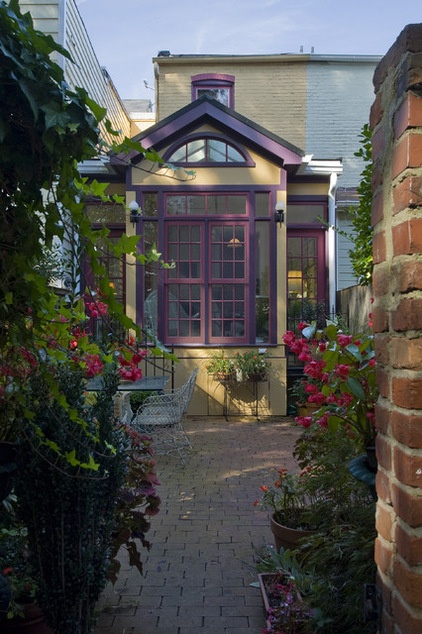
For some people a little purple goes a long way. Take, for instance, this house by Christine Kelly at Crafted Architecture. Two shades of purple (Benjamin Moore’s Autumn Purple and Crushed Berries) call attention to the architectural features of a sunroom addition.
“A purple accent, or any strong color, can really make you notice the details of a home,” Harris says. “If you put on that color, people will look.”

According to the colorist, a touch of grape can add warmth and whimsy to a home with otherwise dark colors. “A bit of purple is like a little surprise, a little something unexpected, and it lives well with gray tones,” she says. “I heard a funny line on The Big Bang Theory — a very dry scientist said, ‘What’s life without a little whimsy?’ When it comes to color, I feel the same way.”
Here a purple door adds character to this mostly neutral home, by Custom Design/Build.
Door paint: Grappa; siding paint: Rocky Coast, both by Benjamin Moore
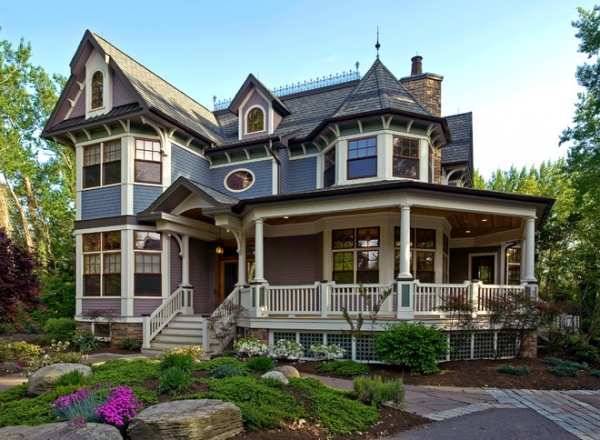
If there’s one place where purple is not as surprising, it’s on a Victorian home — such as this one, by Degnan Design Group + Degnan Design Build. “I think you see more purple on these kinds of houses than any other,” says Harris. “The flamboyant style of the homes really lends itself to purple.”
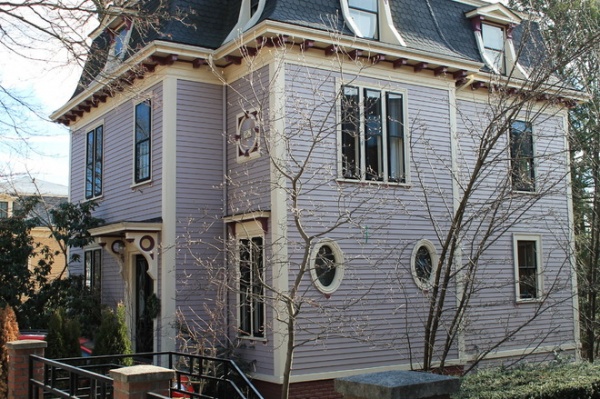
The hue can also add a little levity to what could be an otherwise somber style. Harris says that if painted in very dark shades, the ornate style can read as grim. “A purple color can make a home like this approachable,” she says.
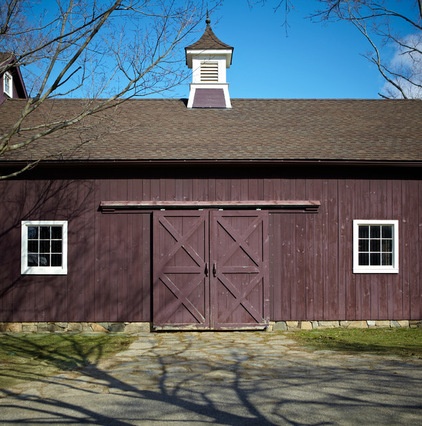
As with any color, there’s a wide variation in tones. “One person’s purple is another person’s brown,” says Harris. “Purple runs the gamut from more red to more blue. In my experience people have been more willing to embrace bluer purples — maybe because it’s a shade more commonly found in nature.”
The deep plum shade on this guesthouse, by Kelly & Co, almost reads as a neutral.
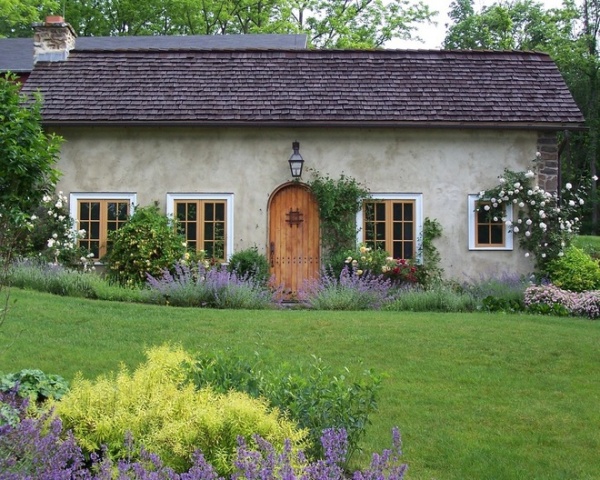
The same could be said for the roof of this classic home. Landscape architects reinforced and balanced the color by repeating it in the landscape.
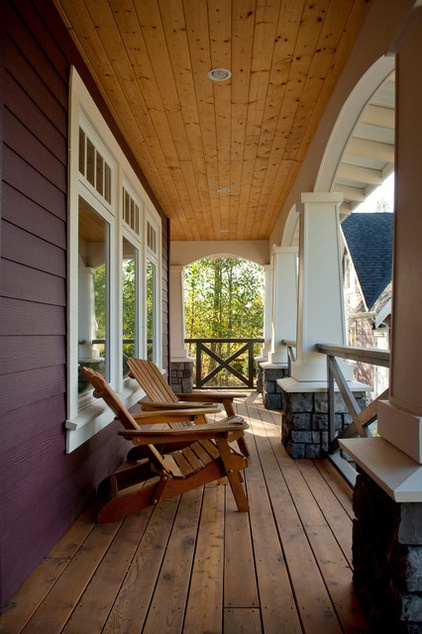
The pros at Rockridge Fine Homes call the custom color on this wraparound porch Merlot. Its deep wine color is almost sedate paired with the warm wood tones.
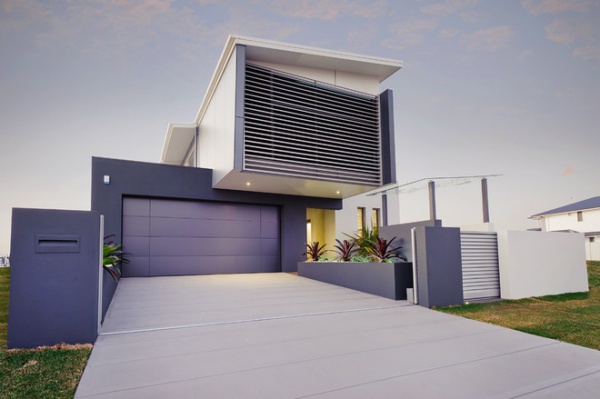
Purple isn’t only for traditional architecture. This modern home, by SMB Interior Design, is purple and proud. “Sleek lines of modern homes can be cold and clinical if painted in all neutral tones,” says Harris. “A little color can bring it to life and emphasize amazing lines. A color like purple can make it feel like a home you’d want to move into.”
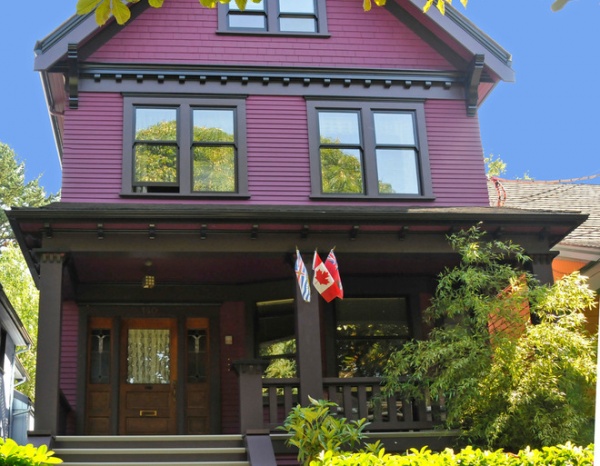
Harris adds that purple, like any color, is not for everyone — although it clearly was for the owners who hired Warline Painting to paint this home in these custom colors. “Maybe not every person who passes will love it, but if you love it, that’s the thing that matters,” she says. “If I see a well-done purple home, I assume that the person living there has a strong sense of themselves and is open to new design ideas.”
Have any purple on your house? We’d love to see it!
Houzz guide: When to Paint Your Door Purple












